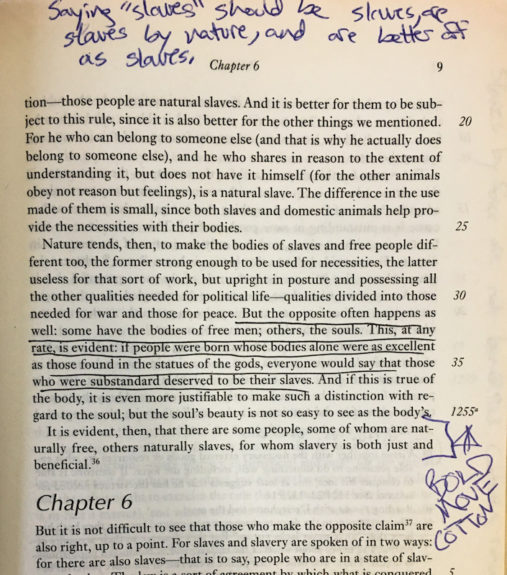On finding meaning in the margin notes.
Class readings can be lonely. They’re long, dry, a significant number of them are written by dead people, and trying to have any sort of social interaction during the reading means you take in no information whatsoever. But the same particular quirk of human civilization—that is, the written language—that necessitates such long readings can also offer a respite, a fleeting moment of connection across the depths of time.

Someone before you has done the same reading.
They, too, sat for long hours in the library, pen tracing the words they read, pausing only to scribble notes in the margins at the important passages. They, too, held this book in their hands the same way you hold it now. You do not know who this person was, or how long ago they left their mark on this small corner of the world. Perhaps they’ve moved on with their life, forgotten the sentences which once seemed important enough to underline—perhaps they’re still here, only a year above, never knowing when they pass you on the steps that you possess what once was theirs.
It is the most human thing of all, this bond between two people that can never be reciprocated. You find connection in the margins of the text and lose it at the same moment because it is a one-way street—a missive, from the past to the present, that can never be replied to. From the cuneiform script, carved by a long-dead stonemason millennia ago, to the scrawled notes before you, we have written because we want our words to last, for someone to read them when we are no longer there to speak.
So add on. Write in the margins what you hope someone else will need to hear. Write so that you too may continue the legacy of jotted words and underlined sentences, questions, and theses, that began before you so that some future student may sit at the wood-paneled desks and revel in the history their textbook contains.
Textbook images via Charlie Bonkowsky


 0 Comments
0 Comments